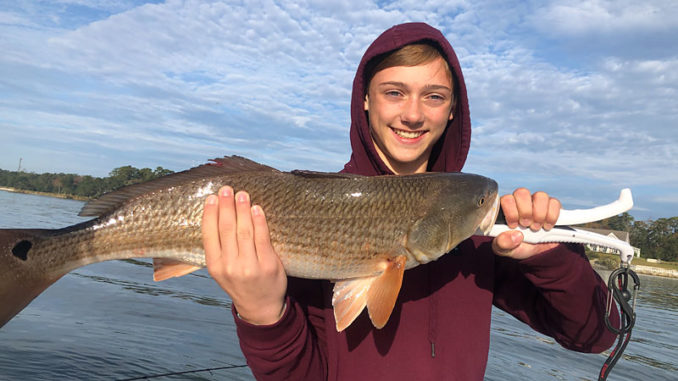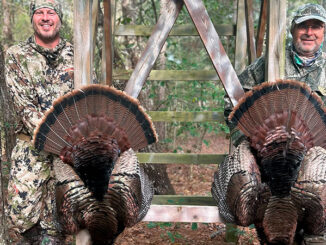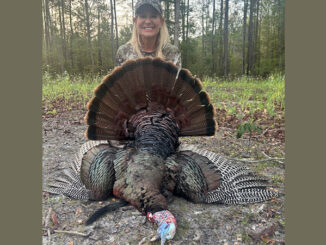
Little River redfish – summer’s last hurrah
August is the last full month of summer. And while school might be back in session soon, it is a fine time to head to the coast to put a bend in the rod.
With water temperatures high, the inshore nursery grounds are full of bite-sized morsels for the gaggle of gamefish to feast upon. And the Atlantic Intracoastal Waterway (ICW) is a prime location to tangle with redfish taking advantage of the buffet.
The ICW serves as a thoroughfare for boaters for commercial and private transport along the coast of both Carolinas. For most of its route, the ICW travels just inshore of the inlets. This makes it an excellent platform for baitfish and large gamefish living in these waters.
Greg Holmes of Fish Skinny Guide Service out of Little River, S.C., homes in on the ICW when the bait gets thick at the height of the summer fishing season. Redfish are at the top of his hit list, and the ICW is his ground zero for these feisty fish.
Baitfish attract these Little River redfish
“The ICW heats up in the summer,” said Holmes (843-241-0594). “The waterway is clogged full of baitfish this time of year, and the reds school up and feast on them.”
Inshore waters are prime nursery grounds for juvenile fish. And the finger mullet and menhaden are very plentiful. But many inshore marshes drain into the ICW’s deep channel, pulling all the small fish into troubled waters. Holmes targets the ICW around the lower end of the tide. That’s when many of the adjacent creeks and marshes are nearly dry.
“I like to start targeting these areas when the water is off the grass completely and the mullet will be running down the edges of the mud,” he said.
The bait can be thick along the shallow edges of the ICW. And for Holmes, anglers need something that stands out and entices these Little River redfish to come in.
“I like to use either large mullet or something smelly like a fresh-cut chunk of mullet. That’s the trick,” he said. “There is already a buttload of small baits everywhere, and the chunk of bloody mullet sitting there will bring them in.”
Short leaders prevent deep-hooking
Holmes will hook his baits on an Owner Mutu light 2/0 circle hook with just enough pinch-on weights to keep the bait stationary. And he also uses a short leader between the weights and the hook.
“The short, 3 inches of leader helps keep the bait from going too deep in their mouth, and it also helps with the hookset,” he said.
Holmes targets these fish along the ICW during the low end of the tide cycle. His favorite tide is between halfway out to halfway back in, but he avoids any slack tides.
“The bite is best when the tide is running,” he said.





Be the first to comment